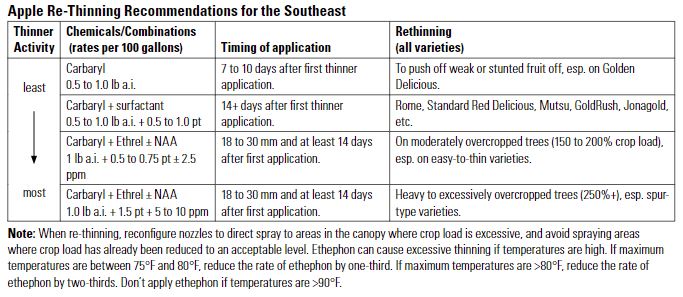Apple Crop Load Management Update: 5/4/2023
go.ncsu.edu/readext?934212
en Español / em Português
El inglés es el idioma de control de esta página. En la medida en que haya algún conflicto entre la traducción al inglés y la traducción, el inglés prevalece.
Al hacer clic en el enlace de traducción se activa un servicio de traducción gratuito para convertir la página al español. Al igual que con cualquier traducción por Internet, la conversión no es sensible al contexto y puede que no traduzca el texto en su significado original. NC State Extension no garantiza la exactitud del texto traducido. Por favor, tenga en cuenta que algunas aplicaciones y/o servicios pueden no funcionar como se espera cuando se traducen.
Português
Inglês é o idioma de controle desta página. Na medida que haja algum conflito entre o texto original em Inglês e a tradução, o Inglês prevalece.
Ao clicar no link de tradução, um serviço gratuito de tradução será ativado para converter a página para o Português. Como em qualquer tradução pela internet, a conversão não é sensivel ao contexto e pode não ocorrer a tradução para o significado orginal. O serviço de Extensão da Carolina do Norte (NC State Extension) não garante a exatidão do texto traduzido. Por favor, observe que algumas funções ou serviços podem não funcionar como esperado após a tradução.
English
English is the controlling language of this page. To the extent there is any conflict between the English text and the translation, English controls.
Clicking on the translation link activates a free translation service to convert the page to Spanish. As with any Internet translation, the conversion is not context-sensitive and may not translate the text to its original meaning. NC State Extension does not guarantee the accuracy of the translated text. Please note that some applications and/or services may not function as expected when translated.
Collapse ▲For those that have a crop of apples, opportunities to apply chemical thinners have been limited. Inclement weather (high winds, cool temperatures, and rain) and uncertainty of initial fruit set due to multiple frost/freeze events have seriously complicated an already difficult series of decisions.
A quick recap of the current situation:
- Some orchards have not received a chemical thinner to date (at least in western NC).
- While fruit growth rates were slowed by cool temperatures, many cultivars have fruit size greater than 15 mm. Some blocks have disturbingly large fruit. Late blooming cultivars (Rome) are in or approaching the 8-14 mm window
- The 1st thinner application that some orchards will receive will be a rescue thinner. I suspect that this is the case for significant acreage in the region.
- Those that were able to apply chemical thinners in mid-April should be able to see thinner responses at this time. In many cases, these responses have been mild…. and re-thinning is necessary.
Today and tomorrow (May 4 & 5, 2023) present marginal temperatures for chemical thinner activity and we are currently in a carbon surplus. Then, rain, some heat (finally), and an unsettled weather pattern are predicted for Saturday – Tuesday. Once we get into the weekend and early next week, a mild/moderate carbon deficit is forecast in most locations, which is desirable for thinner responses. The trade-off and critical decision for all affected parties:
While the forecast for next week suggests a better opportunity for chemical thinning, will fruit size be too large? This decision is not one-size fits all.
Given the potential for pop-up thunderstorms early next week here are a few reminders regarding rainfall after a chemical thinner application and rescue thinning:
- Concerned about rainfall after a thinner was applied? Most PGR labels suggest that 6 to 8 hours of drying time is required for full activity. However, for most chemical thinners (6-BA, NAA, and carbaryl): once the chemical thinner dries, you can expect at least 80% of the response. This may come into play for those who thin early next week.
- Ethephon is a different animal when it comes to drying time. Work by Dick Unrath and JD Obermiller demonstrated that 8 hours of drying time is needed. It would be inadvisable to re-apply this material in the event of a rain event following application.
- Good spray coverage is important with all chemical thinners, but is an absolute necessity with ethephon.
- Once apples are greater than 22 mm, they become unresponsive to chemical thinner. In warm weather, apples grow ~ 1mm per day. Cool weather slows growth rate, but does not stop it. Once apples are 18 mm, you have about 4 days to apply thinner.
Below are the Apple Re-Thinning Recommendations for the Southeast for your reference.



